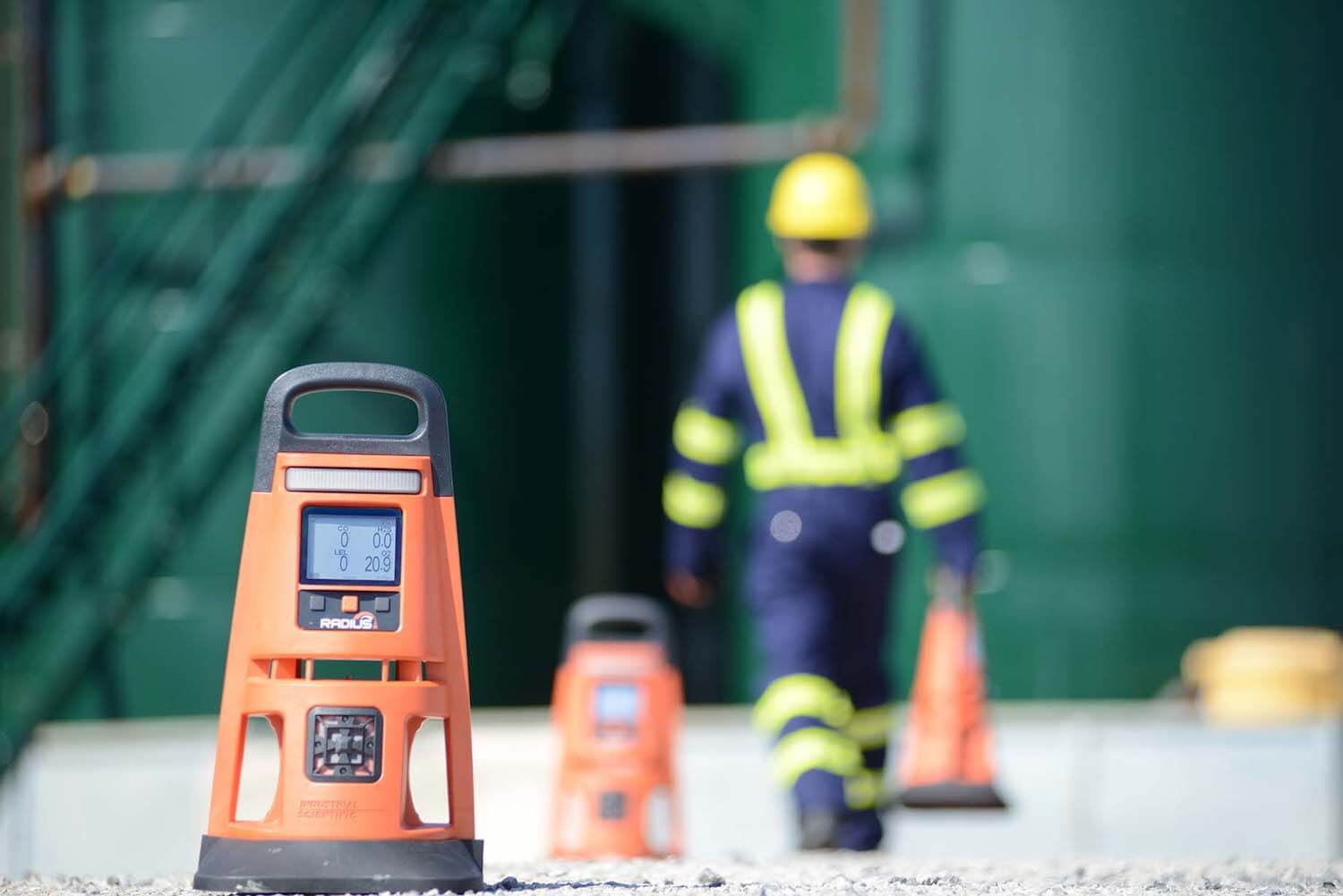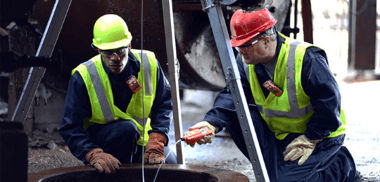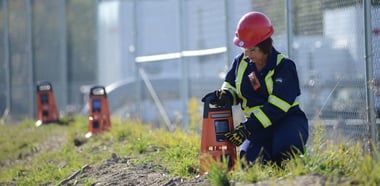Gas detector coverage area is a critical factor to consider when adding area gas monitoring to your gas detection program. Over the past two years, advancements in sensing technology have made it easier and more cost-effective to deploy durable and user-friendly devices across facilities. These devices enhance awareness of environmental conditions while contributing to overall safety improvements.
As area monitoring becomes more common, questions about gas detector coverage area frequently arise:
-
What is the effective radius of an area monitor?
-
How much space can these sensors reliably cover?
-
Can an area monitor detect hazards within 10 feet, 100 feet, or even 1,000 feet?
-
Is it feasible to monitor an entire job site with these devices
This guide addresses these questions to help you better understand and optimize your gas detection strategy.
Understanding the Coverage Area of Gas Detectors
Let’s start with basic sensor function. Sensors can only detect gas if that gas passes directly over the sensor. This is true for both personal monitors and area monitors because they use the same sensor technology. Don’t be fooled — area monitors do not provide more coverage than personal gas monitors. Unlike fixed gas detection points, area monitors can be used in far more dynamic environments, so static assumptions on airflow and gas source don’t apply.

Impact of Pumps on Gas Detector Coverage
Despite what you may think, placing a pump on a monitor will not greatly increase the monitor’s overall coverage. Even though pumps sound powerful, they aren’t so mighty. Pumps draw an average of 500 cc/minute. A good way to think of this is to take a breath, then exhale. The pump brings in that volume of air over several minutes. With that low volume, the pump itself isn’t strong enough to pull in and sample significantly more air than a diffusion-style monitor in an open area.
However, pumps do allow you to remotely sample an area through tubing. For example, a pumped monitor allows you to place tubing in a confined space to remotely sample the air inside while the monitor and operator remain outside. But again, this only samples that the air where tubing is placed – not the whole space.
Factors Influencing Gas Detector Coverage Area
-
Ventilation and Airflow: Air movement can disperse gases, affecting detector sensitivity.
-
Obstructions: Physical barriers may impede gas flow to the sensor.
-
Environmental Conditions: Temperature and humidity can influence gas behavior and detection efficacy.
Enhancing Gas Detection Coverage
- Strategic Placement: Position detectors based on gas type and potential leak sources.
- Regular Maintenance: Ensure sensors are clean and functioning properly to maintain detection accuracy.
- Use of Multiple Detectors: Deploy additional detectors to cover larger areas or complex environments effectively.
Best Practices for Placing Gas Detectors
Unlike fixed-point gas detection systems, area monitors are commonly moved to different locations or are used in emergency response situations. Accordingly, each time you deploy an area monitor, you need to consider these factors:
1. Source identity and placement location: Different gases can have different atmospheric characteristics that you need to consider. For example, some gases are lighter than air while other are heavier. Because of this, it’s crucial that you place an area monitor at the correct distance and height for the gas that needs to be measured. Additionally, if you are using LEL or PID sensors (which are not gas-specific) in your area monitors, you will need to know the source gas and factor its characteristics into the monitor’s reading.
2. Wind direction: Environmental factors like wind direction can influence the effectiveness of your area monitors – and they’re always changing. Just because you have an area monitor placed correctly one day, does not mean it will be in the correct place the next day. A common solution is placing area monitors in multiple locations, so you always have adequate coverage, even if environmental conditions change.
3. Notification: When placing your area monitors, think about the situation in which a gas alarm occurs. How will this system relay critical alarm information to the appropriate personnel? Are your devices connected to each other? Advances in technology now allow area monitors to connect to one another and to personal gas monitors, as well as prompt real-time alerts via text message and e-mail through live monitoring.
Before you deploy an area monitoring solution, conduct a site survey to assess these factors. If you still have questions about how to place your area monitors to properly detect gas hazards, we can help you determine the right solution. When implemented correctly, these solutions can dramatically improve site awareness, leading to better safety and operational decisions.
Learn more about area monitoring with Industrial Scientific.



